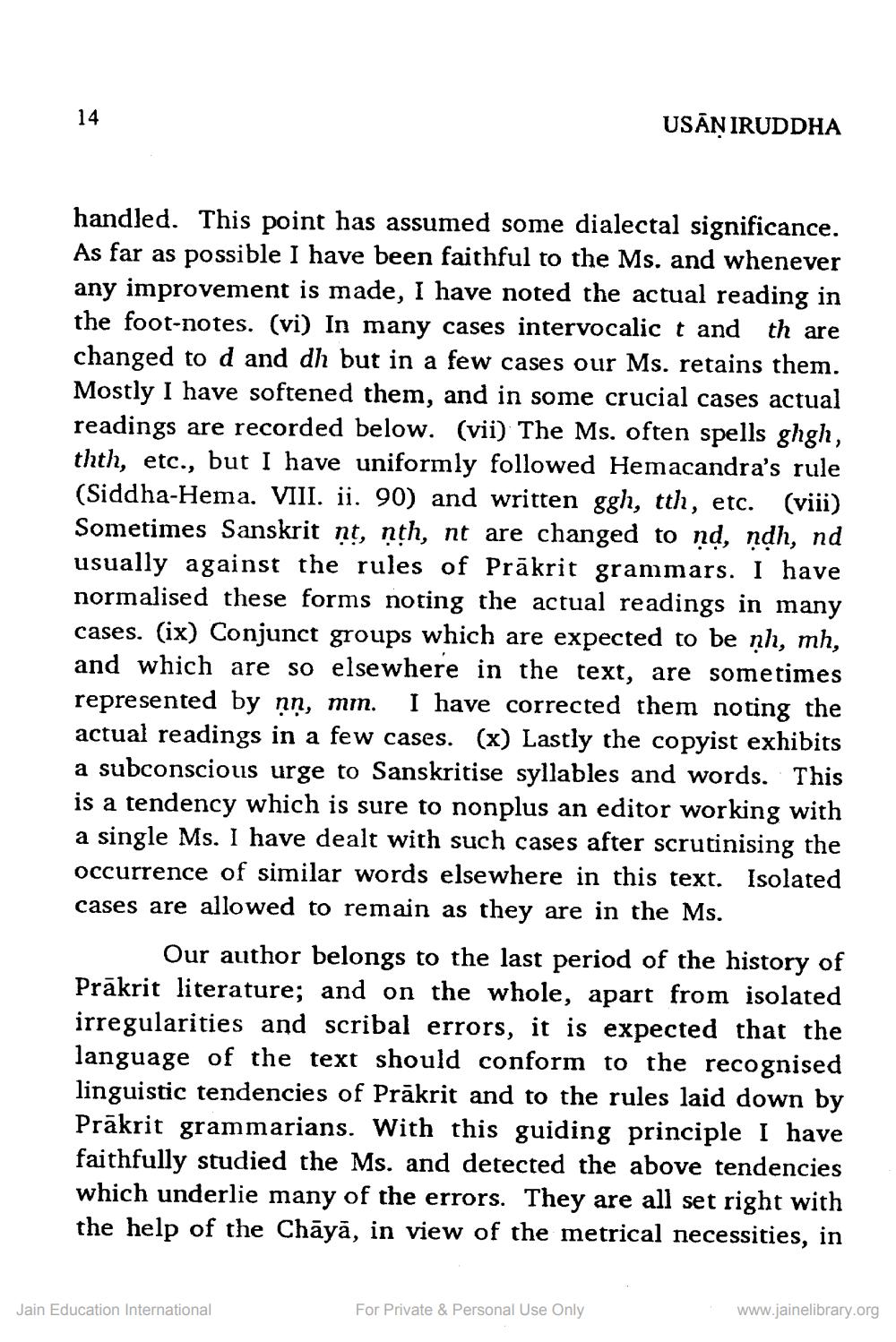________________
14
USĀNIRUDDHA
handled. This point has assumed some dialectal significance. As far as possible I have been faithful to the Ms. and whenever any improvement is made, I have noted the actual reading in the foot-notes. (vi) in many cases intervocalic t and th are changed to d and dh but in a few cases our Ms. retains them. Mostly I have softened them, and in some crucial cases actual readings are recorded below. (vii) The Ms. often spells ghgh, thth, etc., but I have uniformly followed Hemacandra's rule (Siddha-Hema. VIII. ii. 90) and written ggh, tth, etc. (viii) Sometimes Sanskrit nt, nth, nt are changed to ņd, ņdh, nd usually against the rules of Prākrit grammars. I have normalised these forms noting the actual readings in many cases. (ix) Conjunct groups which are expected to be nh, mh, and which are so elsewhere in the text, are sometimes represented by nạ, mm. I have corrected them noting the actual readings in a few cases. (x) Lastly the copyist exhibits a subconscious urge to Sanskritise syllables and words. This is a tendency which is sure to nonplus an editor working with a single Ms. I have dealt with such cases after scrutinising the occurrence of similar words elsewhere in this text. Isolated cases are allowed to remain as they are in the Ms.
Our author belongs to the last period of the history of Prākrit literature; and on the whole, apart from isolated irregularities and scribal errors, it is expected that the language of the text should conform to the recognised linguistic tendencies of Prākrit and to the rules laid down by Prākrit grammarians. With this guiding principle I have faithfully studied the Ms. and detected the above tendencies which underlie many of the errors. They are all set right with the help of the Chāyā, in view of the metrical necessities, in
Jain Education International
www.jainelibrary.org
For Private & Personal Use Only




